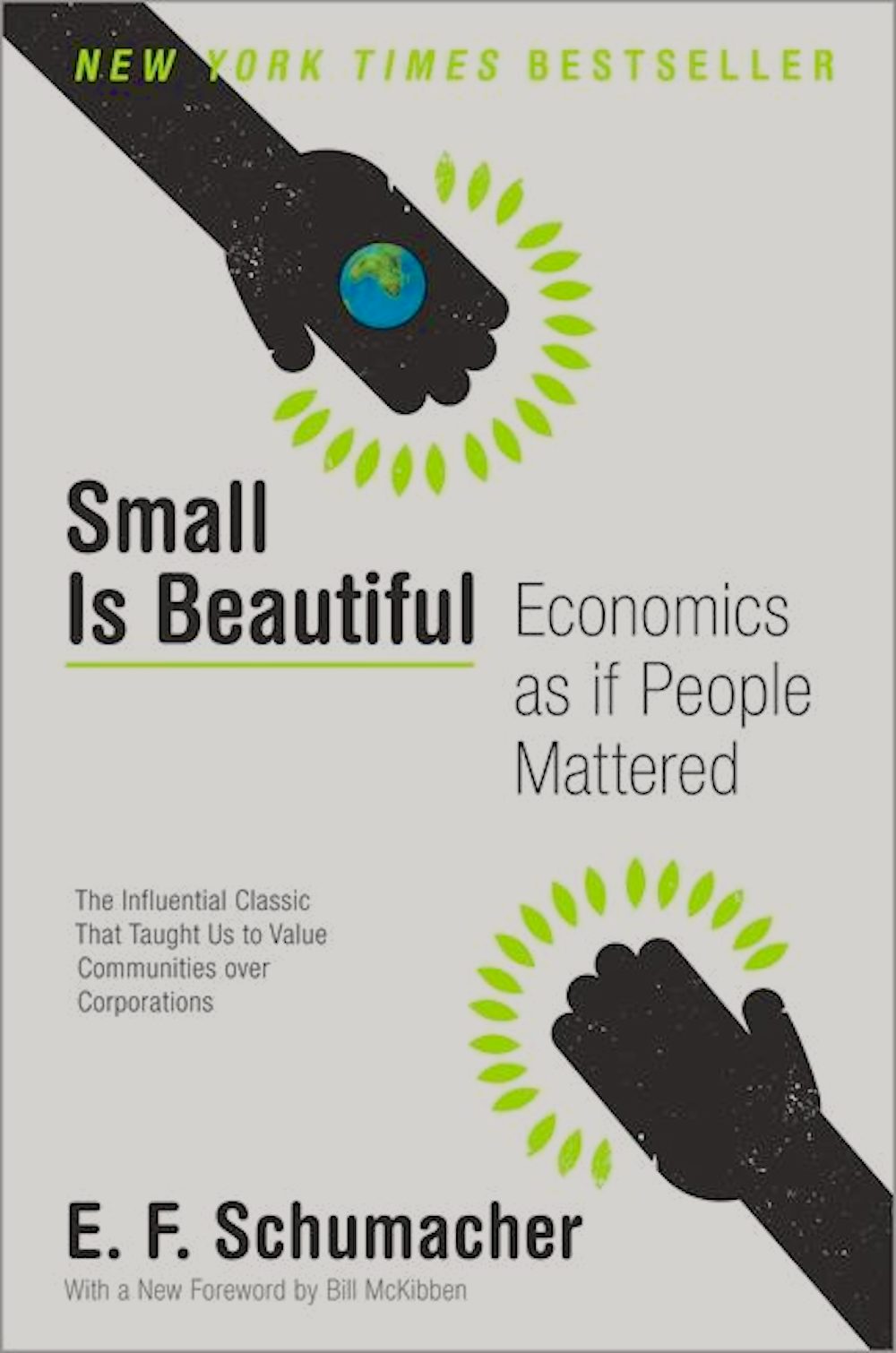In his time, people often called economist and writer E.F. Schumacher a crank. According to those who knew him, he actually adored the intended slight, saying "a crank is a piece of simple technology that creates revolutions.”
Schumacher’s 1973 book, Small is Beautiful, led to its own understated revolution, and paved the way for how many of us think about both environmentalism and development work today. Four years after the book’s publication, Schumacher, once a refugee from Nazi Germany, passed away after falling ill on a train to Zurich. In his obituary, The New York Times noted Small is Beautiful “became a world best seller and was translated into 15 languages.” A couple of decades later, The Times Literary Supplement named the book one of the 100 most influential since World War II.

In just 288 pages, the book’s essays tackle topics ranging from the unsustainability of the modern economy to the perils of nuclear waste to the importance of unformal education. One of the most lasting lessons of Small is Beautiful is the idea that highly technological Western solutions to problems aren’t always the most practical or effective because they don’t account for people and their situations.
In fact, the full title of the book is Small is Beautiful: A Study of Economics as If People Mattered. Early on in my career as an agronomist in Guatemala, the book fell into my lap and changed the way I thought about development work. Fresh out of college, I was ready to implement the newest, most advanced technologies to make rural spaces more productive and turn places of poverty into places of wealth. But, as Schumacher wrote, “An ounce of practice is generally worth more than a ton of theory.” His book told me that top-of-the-line, high-tech solutions didn’t generally respond to the needs and realities of the poor communities where I was working. It turned out the most important tool for soil and water conservation for the communities I worked with was the A-frame, which is easily constructed from a few wooden poles.
“Any intelligent fool can make things bigger, more complex, and more violent,” Schumacher wrote. “It takes a touch of genius — and a lot of courage — to move in the opposite direction.” Small is Beautiful illustrates the importance of the simplest, most elegant solutions and popularized the idea of intermediate technology, something usually referred to now as appropriate technology.
Depending on how you pronounce the word, appropriate means both “suitable or proper in the circumstances” and “to take something for one’s own use,” and both of these meanings are essential to the ideology of appropriate technology. High-tech solutions are impressive, but they don’t always meet the needs of farmers and they’re not always realistic in terms of cost or upkeep. In poor, rural areas, it doesn’t make sense to use technology that needs to connect to an electrical grid to operate or that needs significant upkeep and maintenance.

When the two definitions of “appropriate” merge in relation to technology — when people take technology that suits their situation then make it their own — that’s fundamental to the work we do at Heifer International. The tools we use in our projects have the DNA of Schumacher’s ideas, from solar panels to biogas to soil conservation. When our field technicians provide training or our farmers share with each other the ideas and techniques that have made them successful, those reflect the ethos Small is Beautiful. At Heifer, we — like Schumacher — believe the best solutions are those that make the biggest difference, not necessarily those that are the most expensive.
Though published nearly five decades ago, the legacy of Small is Beautiful is as relevant today as it ever was. Partially because of its influence, development organizations adopted a different understanding of technology while recognizing the agency and knowledge that already exists in communities. Those organizations and others that put people first continue to follow Schumacher’s dreams to orient “science and technology toward the organic, the gentle, the elegant and beautiful.”